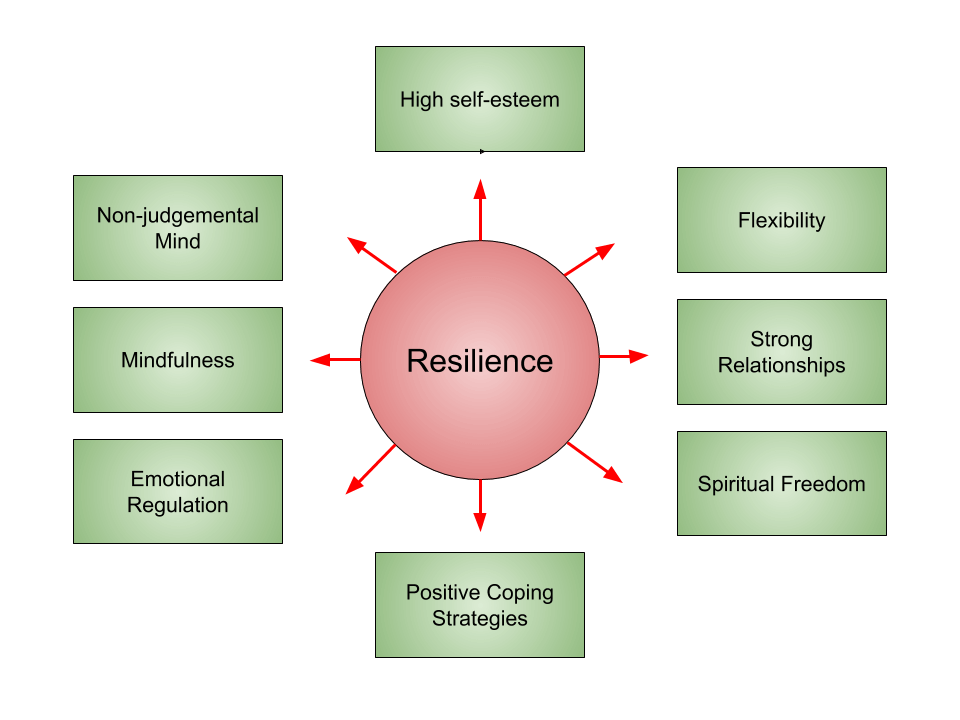What is emotional resilience?
Emotional resilience is our capacity to deal with emotionally challenging situations and to bounce back from emotional trauma, anxiety, negative thoughts, or any other tough or negative emotional faculty.
Our rationality does not always hold its ground in front of our emotional roller coaster. So it is very important to develop emotional resilience from an early age when all the mental faculties are impressionable and expanding to accommodate changes.
How to teach emotional resilience to children?

1. Strengthen your emotional bond
Make a strong emotional connection with your child. They are like a sponge and can absorb the insights they get from their surroundings. Their emotional connection with you will strengthen if you spend more time with them. Be with them in emotionally tumultuous situations. When they face difficulties in schools, in their chores, studies, friend circles, listen to their problems as a friend and offer them insight when needed. Talk to them regularly and make an effort to know what they are going through. Be with them in their rocky journey when they face anxiety, trauma, shame, identity crisis, rejection, hurt, and so on.
2. Allow them space to grow up.
Do not crowd your kid; allow them some slack and own physical and emotional space. Teach them about boundaries and privacy. Allow them to make mistakes and do not berate or discipline them unless they have committed some grave atrocity. Do not yell at them or raise your voice. Most importantly, do not abuse them in any way. When they are going through mental trauma, anxiety, or frustration, allow them to ventilate their grievance and emotional outbursts. But talk to them optimistically and help them put things in perspective.
3. Show them how to deal with risky situations.
It is not wise to wrap your child in a bubble wrap without allowing them to get acquainted with realistic problems and challenges. Bring their attention to real-life problems and challenges and guide them through the take of resolving the problems. Teach them how to take risks responsibly and how to deal with the fallout if the risk does not come with a reward. Help them to bounce back from risky situations and manage them responsibly. Do not give in to your temperament and try to maintain rationality even when you feel like the top of your head is blowing up.
4. Bring them out of their comfort zone.
Bring your kid out of their emotional comfort zone. Put them in realistic situations where they will have to make responsible choices and difficult decisions. They should be able to handle conflicts and adversities under your guidance, where you will be able to understand their inclinations, tendencies, and proclivities. Teach them how to manage anger and stress, especially during a traumatic situation, painful experience, hurt, or insecurity.
5. Be a role model.
As a parent figure, you are the first person to whom your kid will look up. They are bound to imitate your deeds rather than pay heed to your advice. So try to be a role model for your kid. Show them how you deal with difficult situations and how you make decisions. Talk to them about your decisions and justify your actions to make them understand how they should behave in similar situations. The activities of the household, the decisions about your work situation, the problems and dilemmas in a murky situation will offer you plenty of opportunities for engaging your kid as a role model.
6. Teach them to identify emotions.
Teach your kid to identify tumultuous emotions and how to overcome or manage them. Usually, when children are going through puberty, they face lots of confusion about their body, identity, sexuality, and their relationship with their peers. Listen to them about their confusion and emotional changes and talk to them about these changes. Teach them how to experience anger, stress, anxiety without denial or negative thoughts. Also, prevent them from covering up their emotional pain, anxiety, anger with angry outbursts, or aggressive behavior. If they are prone to raise their voice, yell, show aggressive behavior, talk to them calmly and teach them how to behave rationally.
7. Provide them with a safe space.
Chances are your kid might face difficult situations in their school, like bullying, rejection, or in their interaction with peers. Make your home a safe space for your kid, where they can be open and honest in their confession and are free from judgment or negative feedback. Do not judge or try to change your kid as per your preference. Give them space to open up and teach them empathy by empathically listening to them. Your home should be free from toxic emotions and should be open to changes.
8. Engage them in physical activity.
Emotional resilience is related to physical well-being. Encourage your kid to participate in physical activities and spend time outdoors. They should do regular exercises or walks. It also helps in making them emotionally stable and socially cooperative. It helps in developing their sense of community healthy competition. They also learn to go through challenges become more dependable and emotionally mature.
9. Ensure their mental and emotional well-being.
Make sure to know about the mental and emotional state of your kid. Ask them questions about their daily life, aims, and ambitions, goals, and purposes, etc. Teach them the importance of a purpose and discipline. A healthy mental environment is an important part of emotional resilience, so make sure you know that your kid is having a safe mental environment at their school, peer circle, and other places. Also, know the signs of mental abuse or an unhealthy emotional atmosphere. If your kid is facing those problems, take immediate action and remove them from the situation.
10. Teach kids how to take care of themselves and others.
Your kid should be able to take care of themselves and other people. They should have empathy and compassion for other people. So encourage them to do their work from a very young age. Also, try to engage them in volunteer works and community development programs. If they have grandparents or elderly neighbors, encourage them to help out in times of need. Their engagement with our people will provide an emotional connection with their community.
Emotional resilience is a personal journey. You can guide your kid through this journey, but they have to choose their path and walk by themselves. The best you could do is to show them the right ways and how to navigate them.


